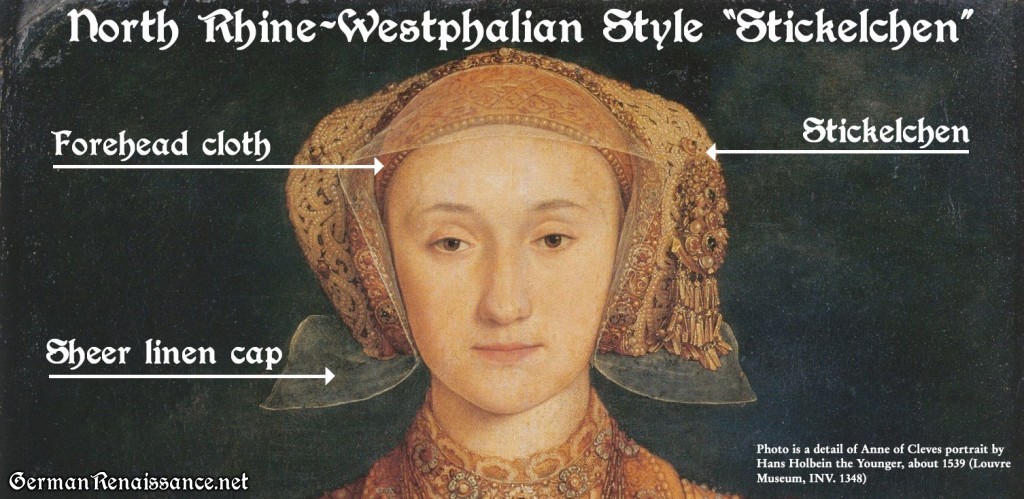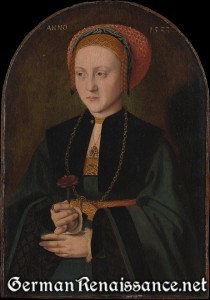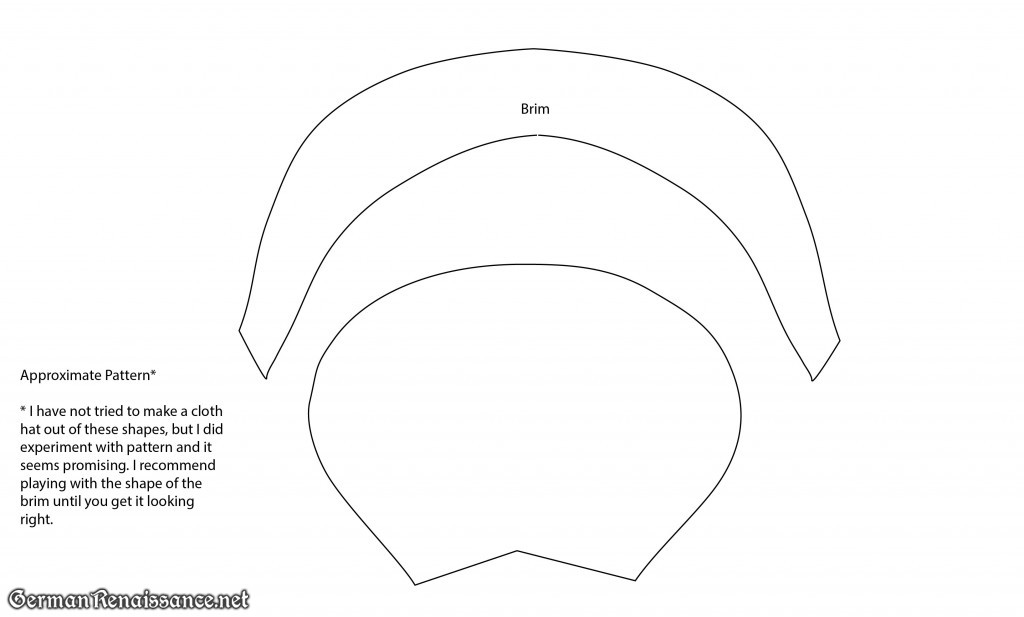The cap is a “Stickelchen.” We get this name from Albrecht Durer, who labeled one of his drawings with it. Also, the inventories of the area around Cologne (in North Rhine-Westphalia) list them by this name. The Stickelchen appears to be made of several layers, as follows:
- A forehead cloth. This is likely a wide band of silk that wraps around your head.
- (Optional) A very fine, sheer linen undercap (D-shape, somewhat similar to the folk Dutch caps of today — the side of it may peek out from under the stickelchenand even fold up at the sides like wings). Note: In some portraits, the linen undercap is replaced by braids, peeking out over the forehead cloth and under the stickelchen (you can see this in the portrait of the small girl below).
- The stickelchen itself, likely made of silk. The stickelchen is decorated with pearls, jewels, and even spangles, either all over or on the band/brim only. To get the stiff shape of this cap, you’ll want to start with a base of buckram and put your silk over that.
See the paintings of Barthelomaeus Bruyn for more examples of this type of cap (some shown below):

Detail from Portrait of a Lady with her daughter by Barthel Bruyn the Elder (1493–1555), circa 1535-1545
I have not yet made this cap, but here is the basic pattern I would begin with and then tweak from here. I would try making it from paper first until it has the right shape (that’s how I got this approximate pattern).




